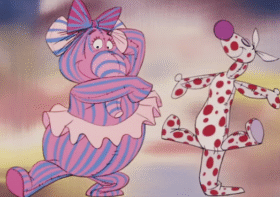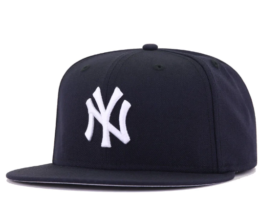Fall Style Tip: Wear More Wool

When the weather starts to get colder, as it has over the last few days, you’ll hear people howl and lament the waning days of summer.
I’m not one of them. I love the cold weather. It’s why I moved to a mountainous area of the Northeast.
There’s a well-worn phrase that goes something along the lines of, “People who don’t like the cold just don’t have good coats”. And I believe there is some truth to that statement.
Take a look at the people who usually complain about cold weather. What are they wearing? Hoodie over a t-shirt. Jeans. Gym socks. Sneakers. Some sort of generic, zip-up, warm-up jacket. Cheap beanie/watch/skull style hat.
No wonder they hate the cold! They are woefully underprepared for it!
What’s do all the things they’re wearing have in common?
All their clothes are made of cotton.
Cotton is good at certain things. It’s very durable, which makes it great for workwear, like denim jackets and pants. It’s also soft and breathable, which make it excellent for shirts and undergarments.
What cotton is bad at, however, is insulation. Under normal circumstances, it doesn’t do a great job of keeping you warm. And if it gets wet? Forget about it!
Now, if you’re into menswear you have undoubtedly heard that wool is a “magic” fabric but I find that very few men take the opportunity to sprinkle wool into as many pieces of their wardrobe as possible!
It’s a shame really. Wool has this weird reputation as an itchy, uncomfortable fabric. I always liked wearing wool, but I never truly appreciated it until a few years ago when we took our boys to a birthday party.
It was a combined birthday party for a couple kids in my son’s class. It was held at a local state park since a ton of kids were expected. The parents clustered around the picnic tables while the hosts cooked up some burgers. The kids ran amok in the adjacent fields and splashed around in the lake, even though the air temperature was about 55 degrees.
Considering there was a bit of a chill in the air, I wore a thick, denim jacket over a flannel shirt and some cotton, twill pants. As I was watching my oldest son frolic in the lake with his friends, he lost his footing and slipped underneath the water momentarily. He couldn’t swim so I ran into the water and fished him out by the scruff of the neck. It was a little scary, since I think about what would have happened if I hadn’t been right there watching him, but he was totally fine.
I was soaked up to my chest. I hurried over to where a large campfire had been built and tried to dry out. What I realized was that, even after a long time of sitting by the fire, I never really got dry. And I never really warmed up. I was wet and cold for the rest of the party and didn’t venture too far away from the fire for the remainder of the day.
The whole scenario opened my eyes to how awful cotton is at insulating, especially when it’s wet.
So, if you want to really enjoy the fall and winter, I recommend you get (re)acquainted with wool.
The best way to dip your toes into the world of wool is to quite literally do just that! Pick up a pair of wool-blend socks to wear inside your boots (I like L.L. Bean’s socks). Start with the wool-blend so that they are stretchy and soft. You’ll notice that your feet don’t get nearly as cold as they did before when you wore those regular, old gym socks with your boots. You’ll be pleasantly surprised that your feet don’t sweat or smell as bad at the end of the day. Also, make sure the pair you get is tall enough to extend up your calf a little. That will help keep you dry if a little snow makes its way under your pant-leg.
When it comes to your footwear, wool can make a huge difference in the lining of your boots, when you’re out-of-doors, or your slippers, when you’re inside. Again, your feet won’t sweat or smell as much if they’re wrapped up in wool as opposed to cotton (as is common in the linings of many boots and slippers) and they’ll stay warmer. Both my go-to winter boots and my slippers are lined with fuzzy wool and they perform incredibly well.
Moving on up, pants are usually the hardest wardrobe item in which to incorporate wool. Unless you’re wearing wool, flannel trousers (or worsted, dress trousers), the pants you wear will probably be cotton (think: jeans, corduroys, chinos). If the rest of your body is sufficiently insulated, your legs will probably feel fine. I don’t know about you, but I usually feel the cold in my torso, hands, feet, and head. I hardly ever think, “Wow, my legs are cold”. Also, your socks may extend up your calves a bit which will provide some extra warmth. So, don’t worry too much about incorporating wool into your pants.
For your upper body, and this will come as no surprise, the easiest way to add some wool is in the form of a sweater. This can take the form of either regular wool (something like merino) or cashmere. Merino will be a bit more durable and cheaper than cashmere. Cashmere will be incredibly soft and luxurious, but it wears out faster and costs much more than other wools.
The great thing about a wool sweater is that it doesn’t sit directly against your skin. You’ll more than likely be wearing a cotton shirt with the sweater over it, so you don’t have to worry about feeling itchy. I pretty much always wear a long-sleeved, collared shir under my sweaters for that reason.
Since the sweater won’t be sitting directly against your skin, you can branch out a little into thicker or shaggier wools than you would use for something like socks. Pound for pound, these sweaters will keep you much warmer than their cotton counterparts. Honestly, cotton sweaters are sort of useless. They often have just as much heft as wool, but they’re not nearly as warm.
Another benefit of wool is that you don’t need to wash it as much as cotton. Wool is naturally odor-resistant which means that you can go months without having to get your wool garments laundered (or in my case, years).
As far as regular shirts go, you can definitely pick yourself up a wool flannel shirt. The only problem with them is their price. That, and the fact that very few are actually 100% wool. Usually “wool” shirts are something like 50% wool and 50% nylon or polyester or something, but still priced as if they were 100% wool. A little splash of poly in a wool fabric is ok as it helps with durability and water resistance, but I find that if I’m going to spend the money, I want a 100% wool shirt. I have one from Filson and it’s excellent.
A surprising challenge I have found when it comes to wearing wool is finding casual outerwear that incorporates it. I specify casual outerwear since most formal-leaning overcoats are thankfully made from wool and easy to find at decent prices. One of my fall/winter staples is my L.L. Bean barn coat. I have the version that comes with a thick wool lining and it keeps me really warm and dry because of it (just like my wool-lined Barbour in the article’s main picture above)! Many similar coats and jackets, from L.L. Bean’s new anniversary barn coat to Huckberry’s waxed trucker jacket, have cotton flannel linings instead of wool. While definitely soft, the cotton flannel is not going to keep you nearly as warm. Additionally, if you’re really caught in torrential rain, the cotton flannel is not going to keep out any moisture that might make it past the shell of the jacket. Lastly, you don’t really need the lining of your jacket to be super-soft anyway (since you’re wearing it over your regular clothes), so the cotton flannel doesn’t really serve a purpose.
When it comes to a jacket or coat, wool goes a long way in keeping you warm and dry. If the shell of the coat is cotton (waxed, like a Barbour, or canvas or whatever) make sure the lining is wool. If the shell of the coat is wool (or wool/poly blend) it’s ok for the lining to be cotton since you’re already getting the benefit of the wool on the outside.
When it’s really cold, I wear a thick, heavy, wool hunting coat from Woolrich. It’s basically a giant, wool blanket and it feels like body-armor against the elements. I love it.
Topping things off, we have hats. My wife and I visited Portland, Maine when my first son was a baby and since it was winter at the time, I wore a beanie. Unfortunately, it was a cheap blended material of some sort that I got for $10 at Gander Mountain. I didn’t realize how inadequate it was until I picked up a wool/cashmere version from Portland Dry Goods and wore that for the remainder of the trip. That hat is still one of my most-worn cold-weather pieces.

Wool hats don’t have to take the form of just beanies, however. Once fall hits, I wear a tweed cap almost exclusively. Hats like these come in many different shapes, from puffy, 8-panel, newsboy styles to sleek, scally-type caps. So, don’t discount them straight-away if you’ve never given them a try. You’ll definitely be able to find a cap that fits your style.
Now, if you’re going with a proper, brimmed hat, then fur felt beats wool. It’s one of the only instances I can think of when there’s a better natural fabric than wool for outerwear.
If you live in a place like Florida and spend most of your time in linen, then I can see why wearing wool might not appeal to you. But for those of us who live where it gets cold, proper clothing is essential for enjoying a large chunk of the year! I always say that you can always put on more clothes and get warmer, but you can only take off so much if it’s really hot out.
I’m not going to let a little cold weather stand between me and happily playing outside with my boys. As I always say, clothes are what accompany us on our adventures. The clothes, themselves, aren’t the adventures.
We need to equip ourselves with the proper tools for living. Wool is the sturdy, dependable workhorse fabric you need more of this fall.



